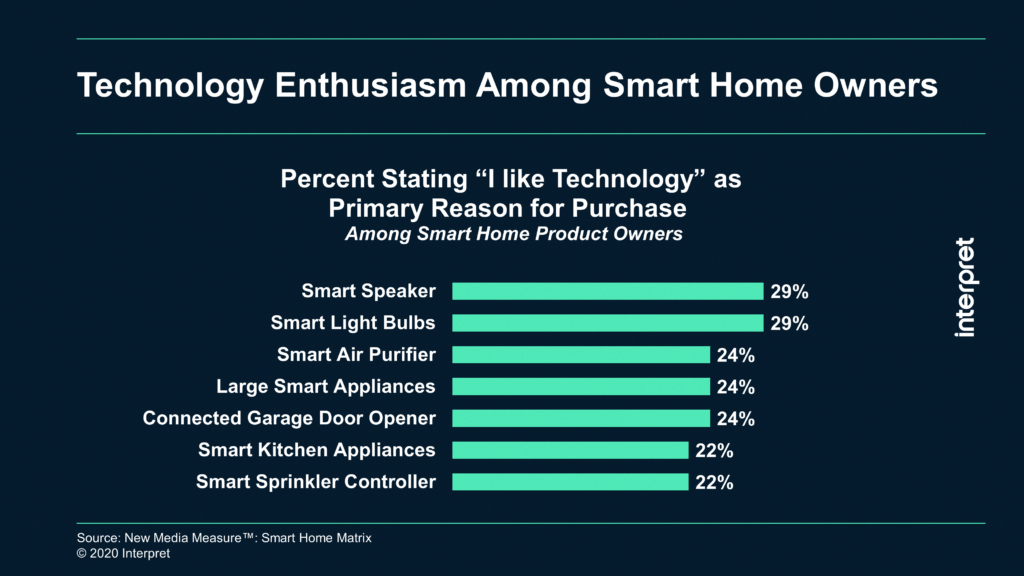2020 was a good year for smart home products, with category sales increasing by 10% according to several sources. Security systems, smart doorbells and connected cameras continued to be hot items for protecting and remotely controlling the home.
Interestingly, some smart home devices are still purchased primarily because people are tech enthusiasts. Of the smart home device buyers tracked by Interpret’s Smart Home Matrix™ research, buyers of connected lighting, smart speakers, connected garage door controllers, smart sprinklers, and connected appliances state their primary reason for purchase is that they simply “like technology”. This might present a risk for these products’ relative long-term viability.
On the other hand, buyers of smart thermostats, smart door locks, and pet camera/feeders are more likely to state their primary reason for buying is function-driven, specifically to “control the home remotely.” Buyers of connected security cameras, smart doorbells, leak sensors, smoke detectors, and integrated smart home security systems are also more function-oriented, stating their primary motivation is to “protect my home from fire, flood or burglary.”
In order for specific smart home products to fully realize their potential, they need to purvey “must-have” functionality and not just be considered “like-to-haves.” To do so, smart home device marketers must firmly align valued use cases with products, or run the risk of not gaining widespread mainstream adoption. Of course, smart manufacturers and marketers can deftly create “must have” perceptions as products evolve.
“Smart TVs are an example of a product with an initially nice-to-have feature that helped bring about a change in the way a majority of households now watch video entertainment, and subsequently became a mass market product. Smart appliances that tightly integrate online recipes and meal planning will similarly change the way people plan, shop, and prepare meals, becoming a standard feature in new kitchens,” says Stuart Sikes, Senior Vice President at Interpret.




